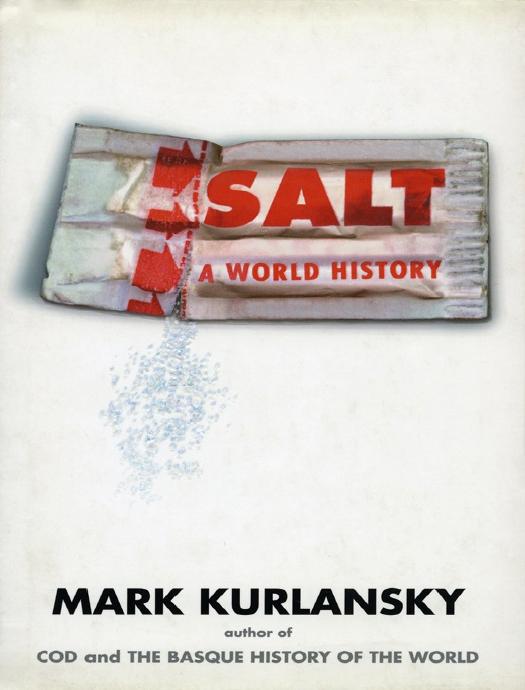Salt by Mark Kurlansky

Author:Mark Kurlansky
Language: eng
Format: epub, mobi, pdf
Publisher: For the Benefit of Mr. Kite
Published: 2001-12-31T16:00:00+00:00
A woodcut showing salt being measured, from Ordonnances de la Prévôte des Marchands de Paris 1500. The Granger Collection
♦
Louis XIV put the state’s finance and commerce in the hands of Jean-Baptiste Colbert, the son of a merchant family from the Champagne region. Colbert was a leading advocate of the school of economics known as mercantilism, which held that the value of the state was measured in the goods it exported and the precious metals it imported. To this end, both production and trade were to be tightly controlled by the state through such tools as taxes and tariffs. Mercantilism held that the sum total of world trade was limited, so that if England increased its trade, it would be at the expense of France and everyone else.
In salt, Colbert reasoned, France had a valuable export product. He was directly involved in marketing French salt to the Nordic countries, and he made important improvements in French waterways to move salt more efficiently. He believed that France made the world’s best salt, which is not a surprising point of view for a Frenchman, but many Englishmen, Dutch, and Germans of the time agreed. Colbert corresponded with salt makers about technical improvements. Today, in Guérande it is proudly asserted that Louis XIV would only eat Guérande salt. If this is true, it would explain why he was so interested in improving the color. Colbert pointed out that if it were white like the salt of France’s primary salt competitors, Spain and Portugal, it would sell better. But the paludiers of Guérande continued to rake up salt with green algae and the charcoal-colored clay mud on which the ponds were built.
Colbert’s name became infamous in French salt history when, in 1680, he revised the gabelle, codifying the inequities among regions into six unequal zones. The Pays de Grand Gabelle was the oldest part, the heart of France, including the Paris region. With only one third of the French population, who used only a quarter of the French salt, and yet who paid two-thirds of the state’s salt revenue, the residents of this region were the angriest people in France. Local merchants imported inexpensive salt from Portugal, the white salt of Setúbal, to try to lower the local price.
The Pays de Petite Gabelle, on the Mediterranean, where much of the salt production was owned by the Crown, was less rigidly controlled but also so heavily taxed that one fourth of all salt tax revenue was squeezed from this fifth of the population.
In the third region, the Pays de Salines, which included Lorraine and other areas of inland brine wells, the Crown also owned much of the production. But in this region, unlike the Grande and Petite Gabelles, both wholesale and retail sales were carried out by private merchants rather than agents of the state. Hence, far less political tension existed in this region, but far less revenue was earned by the Crown. People in the Pays de Salines consumed twice as much salt as those in the Grande Gabelle.
Download
This site does not store any files on its server. We only index and link to content provided by other sites. Please contact the content providers to delete copyright contents if any and email us, we'll remove relevant links or contents immediately.
| Africa | Americas |
| Arctic & Antarctica | Asia |
| Australia & Oceania | Europe |
| Middle East | Russia |
| United States | World |
| Ancient Civilizations | Military |
| Historical Study & Educational Resources |
Cecilia; Or, Memoirs of an Heiress — Volume 1 by Fanny Burney(32491)
Cecilia; Or, Memoirs of an Heiress — Volume 2 by Fanny Burney(31909)
Cecilia; Or, Memoirs of an Heiress — Volume 3 by Fanny Burney(31887)
The Secret History by Donna Tartt(18939)
Sapiens: A Brief History of Humankind by Yuval Noah Harari(14311)
Leonardo da Vinci by Walter Isaacson(13232)
The Radium Girls by Kate Moore(11967)
Sapiens by Yuval Noah Harari(5321)
How Democracies Die by Steven Levitsky & Daniel Ziblatt(5168)
The Wind in My Hair by Masih Alinejad(5056)
Homo Deus: A Brief History of Tomorrow by Yuval Noah Harari(4870)
Endurance: Shackleton's Incredible Voyage by Alfred Lansing(4715)
Man's Search for Meaning by Viktor Frankl(4495)
The Silk Roads by Peter Frankopan(4487)
Millionaire: The Philanderer, Gambler, and Duelist Who Invented Modern Finance by Janet Gleeson(4417)
The Rape of Nanking by Iris Chang(4165)
Joan of Arc by Mary Gordon(4051)
The Motorcycle Diaries by Ernesto Che Guevara(4046)
Hitler in Los Angeles by Steven J. Ross(3923)
